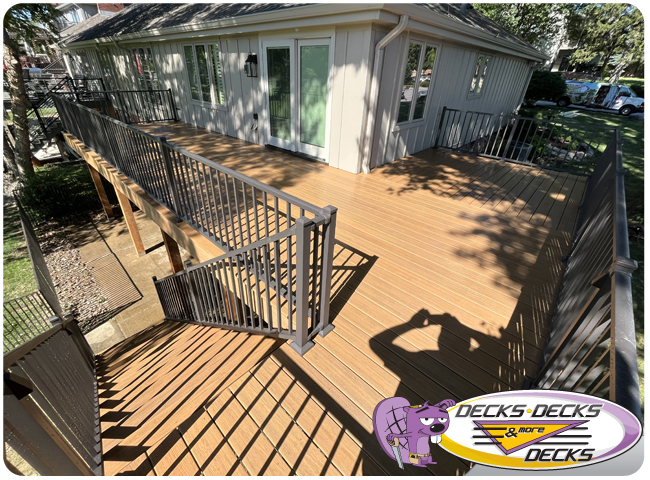Best Composite Decking in 2025: Trex, TimberTech, Deckorators, and Fiberon
Composite decking continues to gain popularity for its durability, low maintenance, and aesthetic appeal. As we move into 2025, several brands stand out for their innovative products and high-quality materials. If you’re considering composite decking for your next project, here’s a comprehensive look at the top options: Trex, TimberTech, Deckorators, and Fiberon.
1. Trex Decking In 2025
Overview: Trex is a leading name in composite decking, known for its advanced technology and wide range of colors and styles. Trex decking is made from 95% recycled materials, making it an eco-friendly choice.
Key Features:
- Durability: Trex decking is highly resistant to stains, scratches, and fading. Its advanced shell technology provides added protection against the elements.
- Low Maintenance: Requires minimal upkeep, with no need for sanding, staining, or painting. Simply clean with soap and water.
- Color Options: Available in a variety of colors and finishes, including rich tones and realistic wood grain patterns.
Popular Collections:
- Trex Transcend: Known for its high performance and premium aesthetics. It features a durable surface that resists fading and staining.
- Trex Enhance: Offers a more budget-friendly option with similar benefits to the Transcend line but with fewer color options.
2. TimberTech
Overview: TimberTech, a division of AZEK Building Products, is renowned for its high-quality composite decking that combines wood fibers and recycled plastics for enhanced performance.
Key Features:
- High Performance: TimberTech decking is designed to resist moisture, stains, and fading. It is also highly durable and resistant to warping.
- Low Maintenance: TimberTech products require minimal maintenance, typically just occasional cleaning to maintain their appearance.
- Sustainability: Made from 100% recycled materials, TimberTech is an environmentally friendly choice.
Popular Collections:
- TimberTech AZEK: Features a capstock technology that offers superior durability and a wide range of stylish colors and textures.
- TimberTech PRO: Provides a more affordable option with similar benefits to AZEK, including resistance to stains and scratches.

3. Deckorators
Overview: Deckorators is known for its innovative composite decking solutions that offer a range of textures and colors. The brand emphasizes both durability and aesthetic appeal.
Key Features:
- Enhanced Durability: Deckorators decking is resistant to stains, scratches, and fading, ensuring a long-lasting performance.
- Low Maintenance: Requires little maintenance beyond occasional cleaning to keep its appearance.
- Variety: Offers a range of design options, including unique textures and colors that mimic natural wood.
Popular Collections:
- Deckorators Voyage: Features a rugged, embossed wood grain surface that provides a high-end look and exceptional durability.
- Deckorators Frontier: Combines affordability with performance, offering a balance of durability and style.
4. Fiberon
Overview: Fiberon is a well-established brand in the composite decking market, known for its high-quality products and commitment to innovation.
Key Features:
- Performance: Fiberon decking is designed to resist fading, staining, and mold. It offers a durable surface that stands up to various weather conditions.
- Low Maintenance: Fiberon products require minimal upkeep, with no need for painting or staining.
- Eco-Friendly: Made from recycled materials, Fiberon decking is an environmentally conscious choice.
Popular Collections:
- Fiberon Horizons: Offers a high-performance, low-maintenance option with a realistic wood grain finish and a wide range of colors.
- Fiberon Sanctuary: Features a unique, variegated color palette and a durable surface that resists wear and tear.
Conclusion
Choosing the right composite decking for your project in 2025 involves evaluating your priorities, such as durability, maintenance, aesthetics, and budget. Trex, TimberTech, Deckorators, and Fiberon each offer top-quality options with distinct features to meet various needs and preferences.
Click Here To Learn More!



